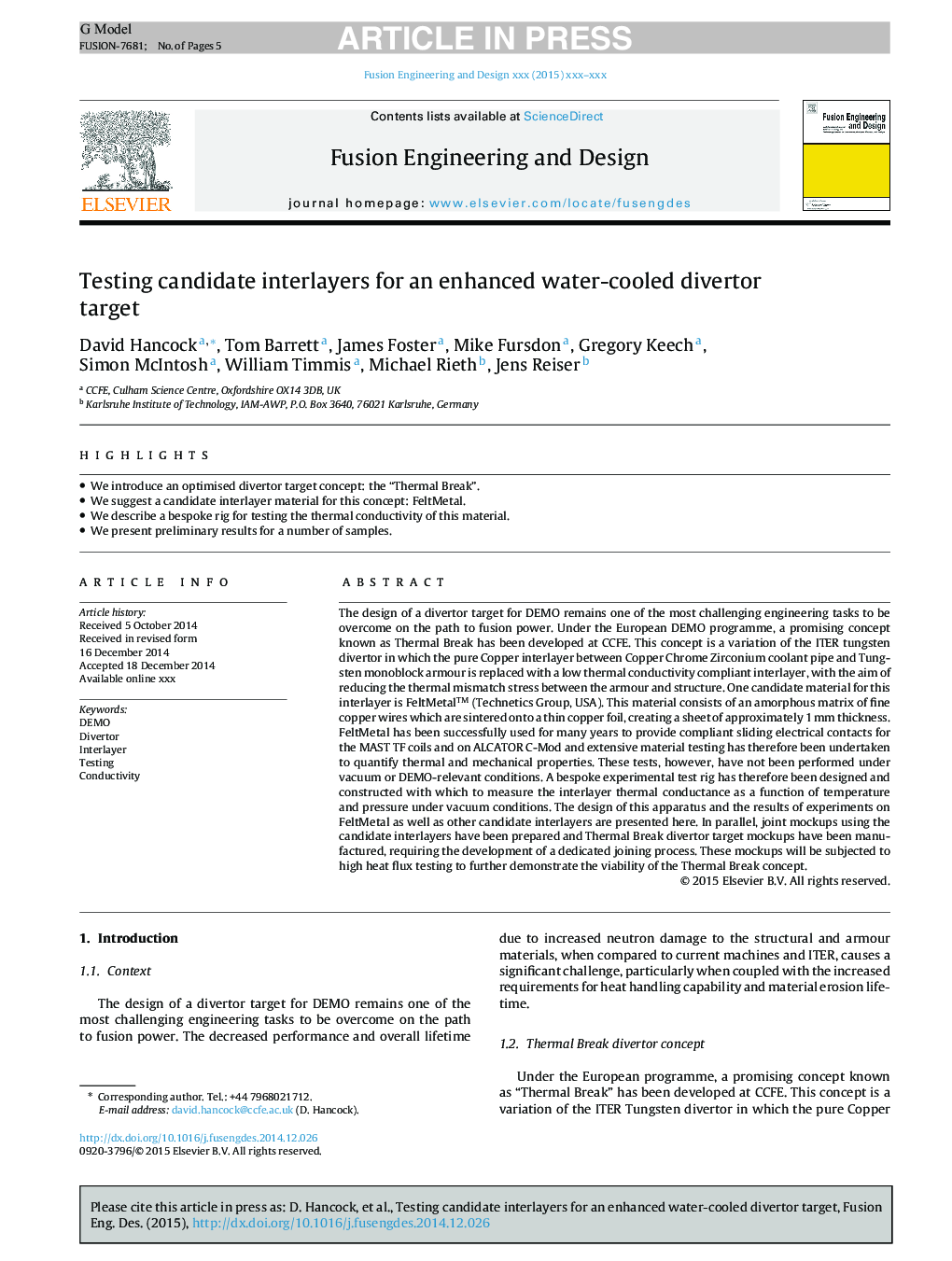| Article ID | Journal | Published Year | Pages | File Type |
|---|---|---|---|---|
| 6745953 | Fusion Engineering and Design | 2015 | 5 Pages |
Abstract
The design of a divertor target for DEMO remains one of the most challenging engineering tasks to be overcome on the path to fusion power. Under the European DEMO programme, a promising concept known as Thermal Break has been developed at CCFE. This concept is a variation of the ITER tungsten divertor in which the pure Copper interlayer between Copper Chrome Zirconium coolant pipe and Tungsten monoblock armour is replaced with a low thermal conductivity compliant interlayer, with the aim of reducing the thermal mismatch stress between the armour and structure. One candidate material for this interlayer is FeltMetal⢠(Technetics Group, USA). This material consists of an amorphous matrix of fine copper wires which are sintered onto a thin copper foil, creating a sheet of approximately 1 mm thickness. FeltMetal has been successfully used for many years to provide compliant sliding electrical contacts for the MAST TF coils and on ALCATOR C-Mod and extensive material testing has therefore been undertaken to quantify thermal and mechanical properties. These tests, however, have not been performed under vacuum or DEMO-relevant conditions. A bespoke experimental test rig has therefore been designed and constructed with which to measure the interlayer thermal conductance as a function of temperature and pressure under vacuum conditions. The design of this apparatus and the results of experiments on FeltMetal as well as other candidate interlayers are presented here. In parallel, joint mockups using the candidate interlayers have been prepared and Thermal Break divertor target mockups have been manufactured, requiring the development of a dedicated joining process. These mockups will be subjected to high heat flux testing to further demonstrate the viability of the Thermal Break concept.
Related Topics
Physical Sciences and Engineering
Energy
Energy Engineering and Power Technology
Authors
David Hancock, Tom Barrett, James Foster, Mike Fursdon, Gregory Keech, Simon McIntosh, William Timmis, Michael Rieth, Jens Reiser,
